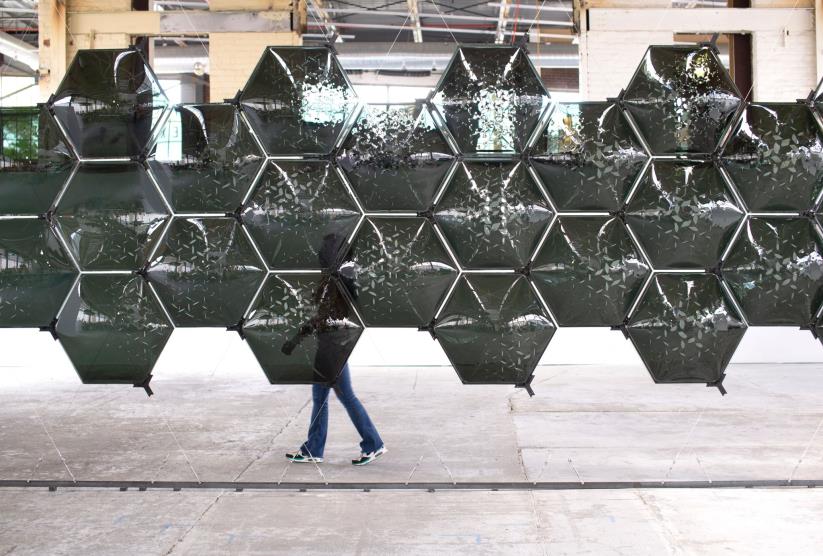Shaping Glass for Acoustic Performance

Abstract
Long Range is an experimental acoustic surface comprising 64 hexagonal, slumped glass panes, arranged in two layers of 32 panels each. It exhibits gradients of acoustic behaviors including reflection, diffusion, absorption, and transmission, accessed via modification of the form of glass panes at a variety of scales. Moving from flat panels at one end to increasingly slumped and perforated forms and culminating in deeply curved panels with porous openings, the components of Long Range aggregate into an acoustic and visual system of versatile behavior. The flat end primarily exhibits acoustic reflection, the center diffusion, and the severe end absorption and transmission, though all parts of the surface exhibit all four behaviors to some extent. Specific lines of research within the development of Long Range include controlled slumping of glass through cut auxetic patterns, the coalescing of visual and acoustic design, and formal and acoustic effects through wave-based simulation techniques. Lab testing demonstrates a correlation between the complexity of form, the presence of openings, and the severity of acoustic absorption.
Published
Issue
Section
Thermal, Acoustic, and Lighting Aspects
License
Copyright (c) 2022 Catie Newell, Zackery Belanger, Wes McGee

This work is licensed under a Creative Commons Attribution 4.0 International License.



